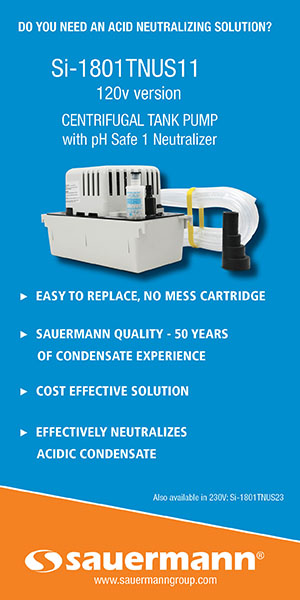When it comes to indoor air quality (IAQ), according to the National Library of Medicine, “The modern scientific history started in the 1970s with a question: ‘did indoor air pose a threat to health as did outdoor air?’”
Not too long after that, it became quite apparent that indoor air is more important, from a health point of view, than outdoor air.
In those early days, the world focused on the IAQ impacts of radon, tobacco smoke, and lung cancer. Later the U.S. targeted volatile organic compounds, formaldehyde, sick building syndrome, house dust-mites, asthma and allergies, Legionnaires disease, and other airborne maladies.
Then, new issues came to light regarding dampness/mold-associated allergies and concerns with what the U.S. National Institutes of Health call “modern exposures-modern diseases.”
A Month Just About Indoor Air
Why do I bring all this up? Because October is National Indoor Air Quality Month where organizations like the American Lung Association and others want to focus our attention on the air we breath everyday in our homes and workplaces.
When the pandemic was in full swing, according to the Environmental Protection Agency, more people began working from home than ever before. So the need to pay attention to IAQ became and remains more important than ever.

This month is all about broadening the public’s awareness and understanding of the importance of IAQ, as well as how to achieve cleaner air inside buildings.
Factors that impact air quality include the lack of air movement, dirty or faulty heating or air conditioning equipment, damaged flue pipes or chimneys, unvented combustion from fossil fuel appliances, excessive humidity, and the presence of mold and mildew.
With cooler temperatures coming, now is the time to make sure customers’ furnaces work properly, so that carbon monoxide is not an issue.
The good news is that as High-Performance HVAC contractors, you actually play a pivotal role in the health and safety of people within indoor spaces. Because the high-performance approach focuses on airflow through measurement, testing, and diagnosing potential problems, you can see and document issues based on facts, not rules-of-thumb or guesses.
Going Beyond Indoor Air Quality
More High-Performance HVAC Contractors are becoming students of IAQ and go beyond ASHRAE Standards 62.1 and 62.2. If you aren’t a student, maybe its time to consider becoming one, because IAQ is complicated and requires training and practice to get it right.
As IAQ Specialist John Ellis states, “Prescription without diagnosis is malpractice.”
One of the most important diagnostics you can perform is identifying root causes of the problem. Those culprits often are pressure imbalances drawing air into the home from a dirty attic, crawl space, or even a drop ceiling.
So we dedicate this issue to the pursuit of high Indoor Air Quality. Read John Ellis’ latest article on selling the right IAQ solutions and David Richardson’s focus on accurate airflow measurements with airflow hoods to get an idea of what I mean. Make IAQ part of your service offerings and be sure to promote those services to your customers.
Happy National IAQ Month.













Recent Comments